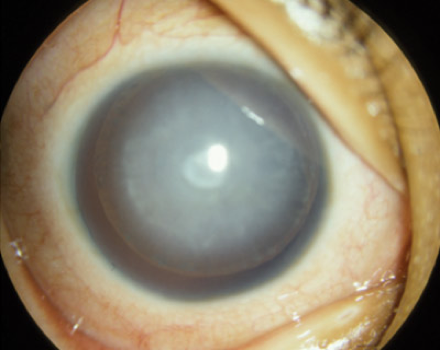By Dr. Mark Siegel
Many people think cataracts only happen to older people, but children can get cataracts too. Both pediatric cataracts and cataracts from aging are a clouding in the lens of the eye that can cause blurry vision or blindness.
In adults, cataracts occur after the eyes and vision are developed and stable. Most adults can have good vision again after the cataracts are removed. Because children’s eyes are still developing until they’re 8 or 10 years old, untreated cataracts can have serious long-term effects on their vision. But early detection and prompt treatment can prevent permanent vision loss in children with cataracts.
Types, causes vary
Pediatric cataracts can be congenital (present at birth) or acquired (develop after birth).
They can occur in one eye (unilateral) or both eyes (bi-lateral). Bi-lateral cataracts can be asymmetric (one cataract is more severe than the other).
Cataracts may appear in different parts of the lens and range in size from tiny dots to dense clouds.
They can be caused by genetic predisposition, metabolic disorders such as diabetes or trauma to the eye that damages the lens. Sometimes they occur spontaneously.

Early detection
An eye’s lens must be clear to focus the images it sees onto the retina, which then transmits the images to the brain. A cataract can prevent light from reaching the retina or cause light rays to scatter as they pass through the cloudiness. This distorts the retinal image.
For children, whose eyes and brain are still learning to see, distortion can lead to amblyopia (lazy eye). Without proper treatment, pediatric cataracts can cause abnormal connections between the brain and the eye. Once made, these connections are irreversible.
Most pediatric cataracts are detected when the child is examined at birth, before they even leave the hospital. Many more are detected by pediatricians at well-baby exams and some are noticed by parents. They are often noticed as a missing or irregular red reflex test on pediatric screening exams.
Acquired cataracts are most often diagnosed at vision screenings by the pediatrician or after an eye injury.

Long-term strategy
Treatment for pediatric cataracts can vary depending on the type and severity. But the vast majority of children need surgery to remove the cataracts.
Unlike adults with full-sized eyes, children require specialized surgical instrumentation and techniques. When performed by an experienced pediatric cataract surgeon, cataract removal is generally safe. The most common risks include glaucoma, retinal detachment, infection and the need for more surgeries.
For most children, surgery is just the first step to rehabilitate the eyes. Ongoing treatment must repair eye-brain connections. This involves teaching the eyes how to focus properly.
After surgery, children often need some combination of contact lenses, intraocular lenses implanted in the eye or glasses. If amblyopia has developed, the child may need patching. This treatment involves covering the stronger eye to stimulate vision in the weaker eye.
Children who receive timely treatment and follow-up have a good prognosis. Successful outcomes may require years of individualized visual rehabilitation.
Dr. Mark Siegel is the medical director at Sea Island Ophthalmology at 111 High Tide Drive (off Midtown Drive near Low Country Medical Group). Visit www.seaislandophthalmology.com.





